
|   |

|   |
Kalamandalam Calcutta's tribute to Gana Gandharvan Dr. K.J. Yesudas - Nita Vidyarthi e-mail: nitavidyarthi@gmail.com Photos courtesy: Kalamandalam Calcutta September 22, 2020 Kalamandalam Calcutta, a pioneering institution founded in 1968 by Guru Thankamani Kutty and Guru Govindan Kutty for teaching the South Indian classical dances in the city and beyond to the Eastern region, paid tribute to the popular and distinguished singer Dr. K.J. Yesudas through solo dance recitals by its senior students set to his not-so-often heard Kritis, Bhajans and Keertanams, on a digital platform recently. Thankamani Kutty and Somnath Kutty, Secretary of Kalamandalam, took great care for the production to have a professional look of a performance in an auditorium, unlike the innumerable videos streaming during the present Corona pandemic. The advantage was of using the well-equipped permanent stage in their training centre and their Research Foundation at Golf Garden, Kolkata. One of the most difficult problems of presentation is that of selection. But in this case the monotony was kept at bay by offering different themes with a variegated fabric of rhythmic and musical numbers, some embellished with infusing electronic orchestration with the traditional, with no limitation of technical resources, carefully blended and presented, one item at a time, daily for eight days consecutively at noon. The pieces were remarkably articulate and musically pleasant. It came as a surprise to many for not having used most of Yesudas' popular playback numbers, for which he is well-known, but on the outstanding classical pieces of the acclaimed Carnatic singer Yesudas, which, with exquisite dancing by consummate dancers, looked ethereal and took the viewers to an ecstatic plane. It was primarily a personal admiration and adoration for the distinguished singer by Thankamani Kutty for landing on this idea. Yesudas had been the greatest singer for her at all times, as she grew up listening to his Malayalam film songs, Keertanams, Bhajans and classical Carnatic songs and even had the opportunity to meet him at his residence in Chennai long back. "I was very keen to have him in my new school building at Golf Gardens, Kolkata, to pay my regards. But it did not happen due to the Corona pandemic. So I would like to pay my tribute to him online with my choreographed numbers set to his eternal songs by my senior students," said Thankamani Kutty while introducing the program. "I really hope that the great maestro sees it too and enjoys the performances," was her wish. K.J. Yesudas was supposed to be in Kolkata for a concert and Thankamani Kutty had seized the opportunity to invite him to her Foundation and pay her tribute to him. Without any fanfare, the program began on the first noon, with the song "Sapta swarangal unarnu" by Malabika Sen, the senior most dancer of Kalamandalam, Calcutta. The fast paced rhythmic number having complex musical phrases speaks about the morning sun rising and comparable to the seven swaras of the octaves gradually to "Un madana nartan" and "Menaka Urvashi Marey". Malabika with her understanding and training was fully equipped to present the intricacies of the talas and swaras of this exciting dynamic favourite from the album Palattu Kunjikannan. 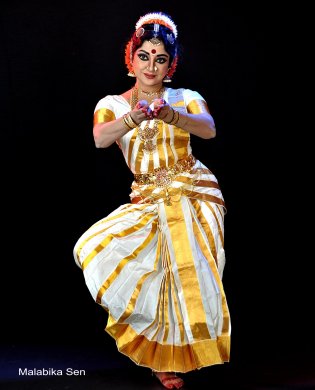 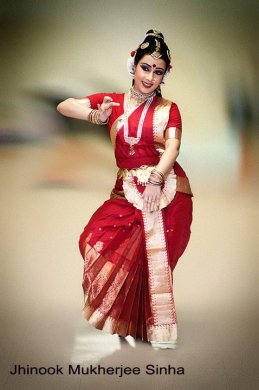 "Gangae" on the second noon described the flow of the river from its source in the Himalayas and bubbly, petite Jhinuk Mukherjee Sinha was the right choice for it. Strong, vigorous jumps at the source of the Himalayas, smooth landing and turbulence to calm, placid flow, portrayed by recognisable classical Bharatanatyam sequences each cued exactly to the musical rhythm and lyrics describes the technical brilliance of her performance. The choreographer included variation of steps and poses and legs flicking out in angles that matched the music. The graceful hastas of the dancer were key moments displaying flow of the river. Tania Dewanji's glorious description of the beauty of Goddess Durga, for that matter Gouri, in "Gouri Manohari" in madhya laya swept one away for its rich and subtle choreography and of course sensitive soulful singing - specially at this time of the year when the city is getting ready to welcome "Gouri" or "Uma". A fine imagery loaded with sophisticated movements by a charming dancer. 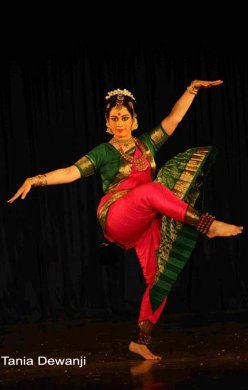 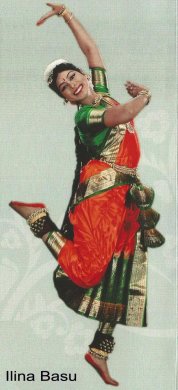 Then came the lovely melodious "Mughdhahasam Mughdhabhavam Ratnaharam Abhiramam, Ambey Sarveshwari Devi Mookambike" by Ilina Basu on the fourth noon about the smile and beauty of Devi Mookambika and the description of the natural beauty of the surroundings of her temple beside the river Souparnika. Expounding the secrets of the vocal art, Ilina proved with her solid training that music remains earth bound unless melody is properly projected. Barnali Shome painted the ethereal beauty of twilight and the dawn with the number "Samayamita poorva sayaanyam amritam Shivamaya sangeetam" embellished with the Sandhya ragas and Usha ragas marked by crisp movements. The musical form of the song "Paada smarana sukham" from the album Sallaapam, was intensified by broadening the form with some relatively slower and delicate lines in the choreography presented with expertise and understanding by concentrating on the lyrics by the mature dancer Moumita Chatterjee. The song specifically mentions how serene and satisfying it is to be at the feet of Lord Krishna. Using the interpretative side of the repertoire, Moumita balanced soft and brisk, slow and fast movements with lovely sways, to describe the Lord and his great deeds. 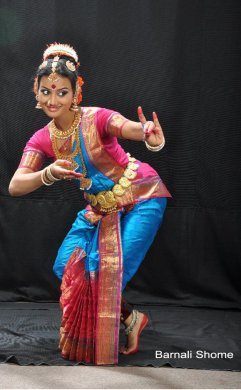 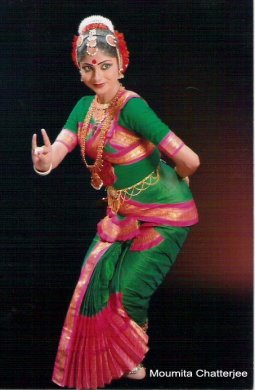  Senjuti Sengupta's "Nanda balam ganalolam hridayalasitam bhavayami" was set to a song that describes an all time favourite theme of the pranks of little Krishna and was presented with natural expressions, great energy and joy. The concluding number "Sangeetam" was a difficult item with a lot of melodic flourish beginning with "Deva sabha thalam" from the album His Highness Abdullah. The singer's voice spanned all three octaves delving deep into the lower register, lower and lower, beginning with a short alaap and as the music moved gradually gliding along the swaras the complex rhythmic patterns and intricacies of the choreography advanced and negotiated with gripping dedication by Malabika. A captivating finale and a compelling performance of an offering of the maestro's mellifluous numbers generated interest afresh into these numbers catalysed by marvelous dancing. 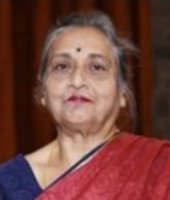 Dr. Nita Vidyarthi is a veteran critic of performing arts and writes on dance, music and theatre in leading publications. |